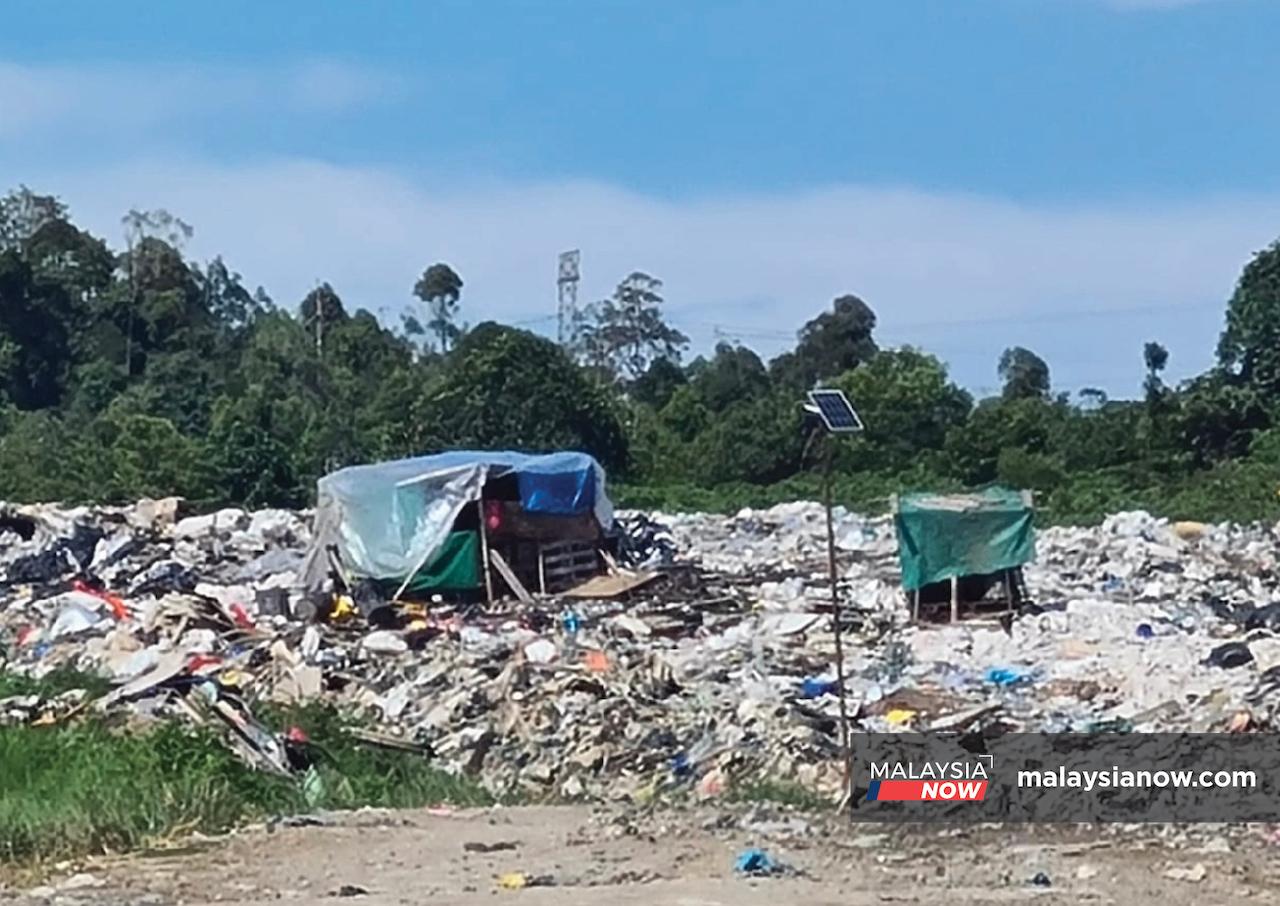Growing up amid the garbage of a slum village in Sarawak
The dump site is the only playground that four-year-old Michelle has ever known.
Sitting on a patch of muddy ground outside her grandparents’ house in Bintulu, four-year-old Michelle plays with a toy that she found at a nearby rubbish dump.
It is a swelteringly hot afternoon, but Michelle and the other village children are out in full force, chasing each other barefoot across trash-laden pathways and playing hide-and-seek among the squalid shacks.
The dump, one of many in the area, contains piles of items considered as refuse by the more affordable who threw them out. But for those living in slum villages such as Michelle’s, they are a priceless lifeline.
Each day, the villagers venture out from their homes and comb through the garbage looking for items to sell.
For the children, meanwhile, the dump site is the only playground they have ever known. The boys frolic in the polluted river while the girls play with marbles amid the piles of garbage.

Michelle spends most of her time dashing through the dump with her friends. In the evening, she wanders with her grandfather while waiting for her grandmother to return from her day of scavenging.
This is the life of children like her, whose families live on the fringe of the garbage fields, scraping a living from the waste unloaded there each day.
Bintulu, once a sleepy fishing village, began bursting with activity after the discovery of a massive oil and gas reserve nearby. After energy came timber and oil palm plantations, and then heavy industries such as aluminium smelting and cement manufacturing.
These sequential booms turned Bintulu into a land known for its offer of easy money for the underskilled. But as it became more prosperous, the income gap began to widen.
Inequality quickly rose, and many rural folk who first migrated to the town in the early 1980s now live as squatters at dump sites such as Michelle’s.

But for all their scavenging, they have barely made a dent in the garbage dumped at these sites.
“Today, many live cramped against the edges of trash mounds, which spill around street corners and devour courtyards,” Francis Ngu Hown Hua, who has spent half his life in Bintulu, told MalaysiaNow.
He said most of the squatters hail from the countryside and have little education and few skills that would enable them to adapt to life in the city.
Michelle’s grandparents are just two among many.

Her grandmother, Nurirastri, said she and her husband moved to Bintulu from Sibu after getting married.
For years, they have walked to the dump site each day where they collect scraps of metal, electronics, rubber and plastic bags to sell for recycling.
They took Michelle in after her mother, who was only 14 when she had her, ran away.
Now, Nurirastri goes to the dump site alone and combs through the trash looking for valuables to sell while her husband takes care of Michelle at home.
At night, they switch shifts: Nurirastri watches over Michelle while her husband goes to look for more items that they can exchange for cash.
“Usually he will stay out until 4 o’clock in the morning,” Nurirastri told MalaysiaNow.
Things became much more difficult with the arrival of the Covid-19 pandemic, but they still struggled to do what they could for the child, even when they themselves fell ill.
Nurirastri suffers from chronic pain in her stomach. “It is very painful; it feels like something sharp stabbing me,” she said.
“But fortunately, Francis helped me. He gave me some medicine, and I go out to work after the pain goes away.”
Francis drops in whenever he can to check on the small family, asking if they have enough food and milk for Michelle.

He said many villagers lack documentation such as birth certificates and identity cards, which limits their access to social services.
“They also cannot afford to go for check-ups,” he said.
Living alone amid the piles of garbage, they do the best they can to raise their children but the environment is not conducive.
“Scavengers use tainted water for rinsing food and bathing although they purify their drinking and cooking water,” Francis said.
“Children can be seen fishing in stinking pools of water near the site.”
For many, this will be their life for the foreseeable future as a lack of access to healthcare and the massive social stigma leaves them with nowhere else to go.
It is not clear how many children are born into this world of decay, but Francis said they will likely be there to stay.

At the dump site, Nurirastri and her husband continue to scavenge, hoping that the little they earn from going through the trash will one day be enough to help Michelle escape their slum village.
“My hope is that we will be able to own a house in a better environment,” Nurirastri said.
“We do this for Michelle. We want her to go to school and become a successful person. I know that we cannot give her a material heritage but the important thing is knowledge.”
It is perhaps the greatest irony of all that to earn enough to leave the dump site, they must continue to live there, at least for now, venturing out from their small shack each day to sift through the trash in the hope of one day fulfilling their dream to escape.
Subscribe to our newsletter
To be updated with all the latest news and analyses daily.
